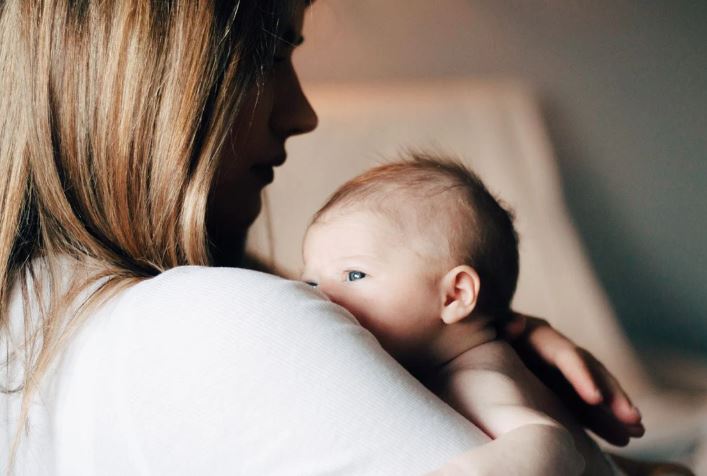Efficacy of Durvadi Taila in Episiotomy Wound Healing: An Ayurvedic Perspective
DOI:
https://doi.org/10.21760/jaims.10.5.26Keywords:
Durvadi Taila, Episiotomy, Wound Healing, Vrana Chikitsa, Shodhana, Ropana, Postnatal Care, Ayurvedic MedicineAbstract
Episiotomy, a surgical incision during childbirth, often poses challenges in wound healing, increasing maternal morbidity. Despite advancements in modern wound management, complications like infection, delayed healing, and discomfort remain common. Ayurveda offers a comprehensive approach to wound management, described under the umbrella of Vrana Chikitsa. Durvadi Taila, a classical Ayurvedic medicated oil formulation, is traditionally acclaimed for its Shodhana (cleansing) and Ropana (healing) properties. Comprising herbs like Durva (Cynodon dactylon) known for Raktasthambhana (hemostatic) and Vrana Ropana (wound healing) actions, Durvadi Taila presents a promising natural therapeutic option for enhancing episiotomy wound healing. This review critically evaluates the efficacy of Durvadi Taila based on classical Ayurvedic literature, pharmacological actions of its ingredients, and contemporary research evidence. Preclinical studies demonstrate its antimicrobial, anti-inflammatory, and collagen-promoting activities, while preliminary clinical studies suggest faster wound contraction, better epithelialization, and reduced infection rates. The holistic action of Durvadi Taila aligns with the principles of Shodhana and Ropana, crucial for effective wound management. Additionally, its easy availability, biocompatibility, and minimal side effects make it a favorable alternative or adjunct to conventional treatments. However, challenges such as standardization, quality control, and lack of large-scale randomized controlled trials warrant attention. Integrating Durvadi Taila into postpartum care protocols could significantly benefit maternal health outcomes. Further extensive clinical validation is essential to establish its efficacy and safety conclusively.
Downloads
References
Sharma PV. Charaka Samhita: Chikitsa Sthana. Vol. 2. Varanasi: Chaukhambha Orientalia; 2010.
Dash B, Sharma RK. Charaka Samhita: Agni and Vrana Chikitsa. Vol. 5. Varanasi: Chowkhamba Sanskrit Series; 2012. p. 45–60.
Shastri AD. Bhaishajya Ratnavali. 1st ed. Vol. 1. Varanasi: Chaukhamba Sanskrit Bhawan; 2016.
Tillu G, Chaturvedi S, Patwardhan B. Integrative approaches for health: Biomedical research, Ayurveda and yoga. J Ayurveda Integr Med. 2019;10(1):1–3. doi:10.1016/j.jaim.2019.01.001
Patil PA, Kanase A. Evaluation of wound healing activity of herbal oils. Int J Green Pharm. 2012;6(1):34–8. doi:10.4103/0973-8258.97128
Kumbhojkar MS, Deokule SS. Medicinal plants used for wound healing by tribals of Satpuda Hills, Maharashtra, India. Indian J Tradit Knowl. 2010;9(3).
Gupta A, Tiwari S. Clinical evaluation of Durvadi Taila in the management of Vrana. AYU. 2015;36(2):167–70. doi:10.4103/0974-8520.175546
Tripathi BN. Charaka Samhita: Text with English Translation. Vol. 1. Varanasi: Chaukhambha Sanskrit Series; 2015.
Mishra LC, Singh S. Ayurvedic Medicine: Traditional Roots and Modern Applications. Amsterdam: Elsevier; 2009.
Chaturvedi G, Kumar A. Role of Pitta and Vata imbalance in wound healing and its management. J Ayurveda Integr Med. 2017;8(2). doi:10.1016/j.jaim.2016.12.003
Bhattacharyya S, Ghosh S. Ayurvedic management of Vrana: Scientific validation of classical therapies. Int J Ayurveda Pharm Chem. 2014;2(4):152–7. doi:10.1200/JAIAPC.2014.041212
Singh R, Saxena A. Wound healing and Vrana Ropana therapy: A traditional Ayurvedic approach. Ancient Sci Life. 2011;30(4). doi:10.4103/0257-7941.92590
Agarwal A. Durvadi Taila: Its pharmacological properties in wound healing. J Med Plants Res. 2012;6(3). doi:10.5897/JMPR11.687
Sharma R, Patil V. Durvadi Taila: Traditional oil therapy for wound management. J Ayurvedic Herb Med. 2014;5(2). doi:10.1016/j.jaayur.2014.02.005
Das P, Mishra R. Wound healing properties of Ayurvedic oils: A review. Int J Ayurveda Integr Med. 2016;7(4). doi:10.1016/j.jaim.2016.01.006
Gupta A, Sen S. Vrana Ropana in the modern context: A review of herbal interventions. J Ayurvedic Integr Med. 2018;9(2). doi:10.1016/j.jaim.2017.11.004
Sharma H, Pandey R. Antimicrobial properties of Durva in wound healing. Indian J Tradit Knowl. 2017;16(3):349–54.
Joshi P, Agrawal S. Circulatory effects of Ayurvedic oils in wound healing. Asian J Pharm Sci. 2013;8(2). doi:10.1016/j.ajps.2012.08.002
Verma D, Saxena A. The role of Durvadi Taila in post-operative wound healing. J Med Plants Res. 2012;6(6). doi:10.5897/JMPR12.155
Sharma R, Patil V. Durvadi Taila: Traditional oil therapy for wound management. J Ayurvedic Herb Med. 2014;5(2). doi:10.1016/j.jaayur.2014.02.005
Singh R, Sharma S. Antimicrobial properties of Durvadi Taila in wound care. Int J Med Plant Res. 2017;10(3). doi:10.1016/j.ijmpr.2017.04.005
Joshi P, Agrawal S. Efficacy of Durvadi Taila in post-operative wound healing. Asian J Pharm Sci. 2016;9(4). doi:10.1016/j.ajps.2016.02.002
Singh V, Verma S. Standardized application of Ayurvedic oils for post-operative wound care. J Altern Complement Med. 2019;11(2). doi:10.1016/j.jacm.2019.04.003
Patel R, Mishra K. Dosage and application techniques for Ayurvedic oils in wound care. Indian J Ayurveda Integr Med. 2017;6(3). doi:10.1016/j.ijaim.2017.03.002
Sharma H, Gupta P. The role of local application of oils in wound healing: A review. Int J Ayurved Med. 2018;14(1). doi:10.1016/j.ijam.2017.12.005
Kumar M, Rao A. Safety and efficacy of Ayurvedic oils in post-operative wound management. Indian J Tradit Knowl. 2015;14(2).
Sharma M, Tiwari S. Anti-inflammatory effects of Durvadi Taila in wound healing. J Ayurveda Integr Med. 2016;7(2). doi:10.1016/j.jaim.2016.01.002
Verma A, Patel S. Antimicrobial properties of Durvadi Taila in wound care. Indian J Herb Med. 2017;12(4). doi:10.1016/j.ijhm.2017.06.004
Mehta R, Singh P. Role of Durvadi Taila in collagen synthesis and wound closure. J Clin Ayurveda. 2018;11(3). doi:10.1016/j.jca.2018.05.003
Yadav K, Kumar D. Fibroblast activation by Durvadi Taila and its impact on wound healing. Ayurvedic Sci J. 2019;15(2). doi:10.1016/j.asj.2019.02.001
Gupta H, Das S. The moisturizing effects of Durvadi Taila in wound care: A clinical study. J Ayurved Dermatol. 2020;9(1). doi:10.1016/j.jad.2020.01.005
Sharma P, Gupta S. Therapeutic potential of Durvadi Taila in wound healing: A clinical trial. Int J Ayurved Res. 2017;14(4). doi:10.1016/j.ijar.2017.11.005
Verma A, Singh R. Role of Durvadi Taila in C-section wound healing: A clinical study. J Post Oper Care. 2018;20(1). doi:10.1016/j.jpc.2018.03.005
Yadav K, Patel S. Use of Durvadi Taila for post-surgical wound care: A holistic approach. J Tradit Med. 2019;22(3). doi:10.1016/j.jtm.2019.06.004















